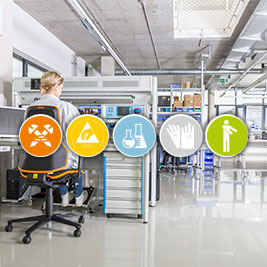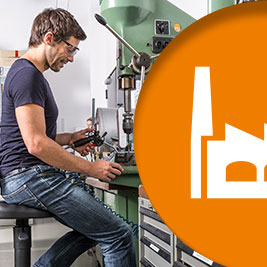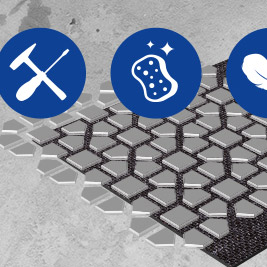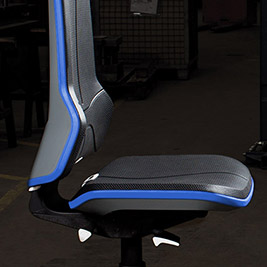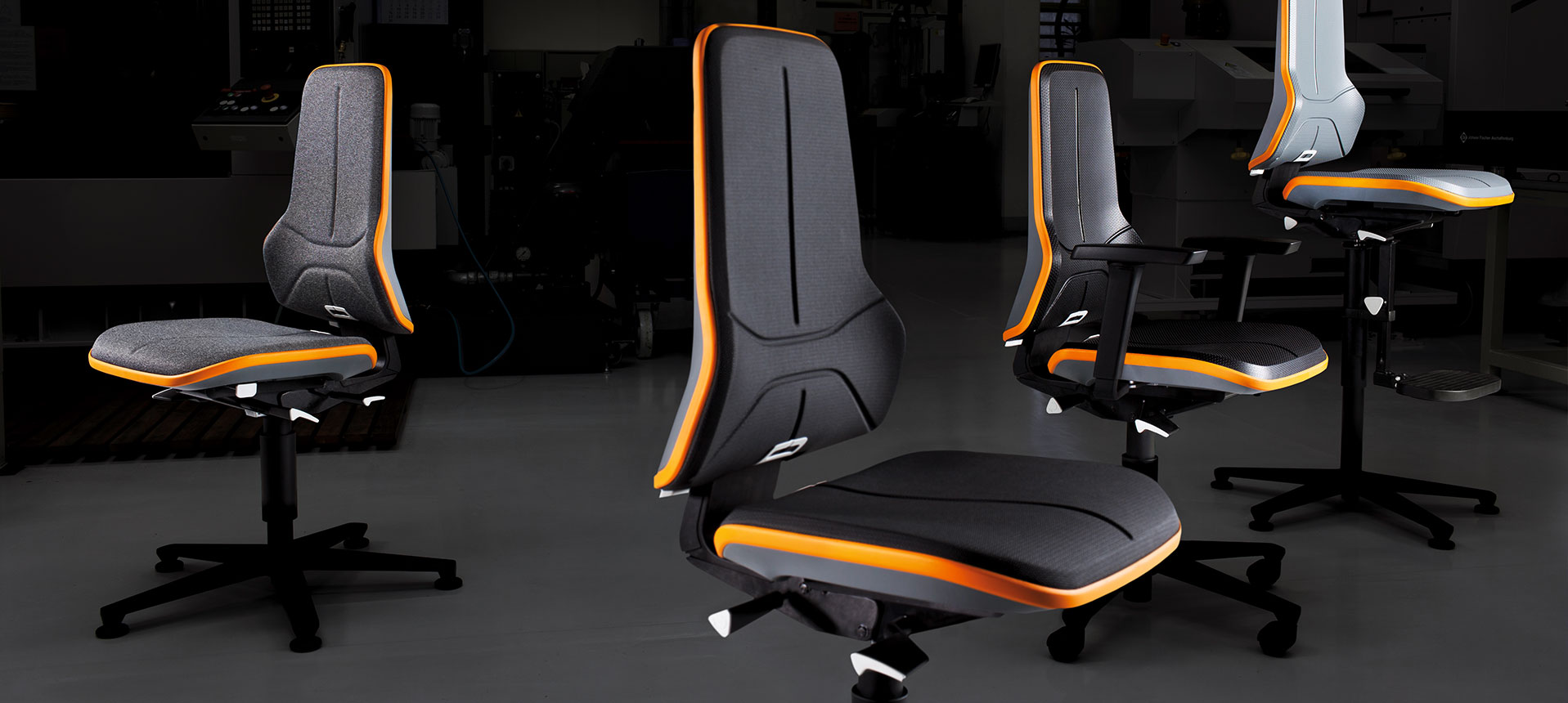
The workshop chair – features of a workplace chair designed for the workshop environment
The workshop chair: Features of the industrial workplace chair
The workshop is home to countless tools, materials and procedures, including drilling, welding, hammering and screwdriving. The use of chemicals and liquids is just as prevalent as metals, wood and other materials. Accordingly, a workshop must be fitted out with robust furnishings and the robustness of other equipment consequently borne in mind too. A workshop chair, for instance, must be particularly durable as well as comfortable to sit on, and ideally be adjustable for the sake of creating an ergonomic working environment. Depending on the kind of workshop for which the chair is intended, certain properties may be required of a workplace chair for a workshop that a regular industrial chair does not offer. If highly sensitive electronic components are handled in the workshop, for example, the workshop chair should be specially designed so that it satisfies these new requirements. If a company is planning to acquire new workshop chairs, they should thoroughly check in advance whether certain standards need to be adhered to or if other particularities of the working environment need to be taken into account. Even if less attention tends to be given to ergonomics in workshops due to the harshness of working conditions, the workshop chair should still conform to certain standards in this regard. Particularly when sitting tasks are performed alongside physical work of a much more cumbersome nature, maintaining a healthy sitting posture becomes all the more important.Requirements for the functions and materials of a workshop chair
As mentioned previously, heavy equipment, various different chemicals and all manner of other items are used in workshops. Accordingly, attention should be given to choosing a workshop chair that is not only manufactured from particularly robust material, but is also highly resistant to impacts and easy to clean. This is not a problem, however, since companies have countless options to choose from with regard to the specifications of the workshop chair they require. Seating comfort, ergonomics and long service life are the primary design considerations for any industrial or workshop chair. Thanks to many years' experience in the manufacture of such chairs, it is no longer out of the ordinary to produce a unique and appealing design in spite of the complications that arise from the conditions in which the chairs are used. With regard to functionality, workshop chairs already constitute high-performance seating furniture in their standard design. All the standard functions (such as height adjustment) as well as any additional functions (e.g. the ability to adjust the armrests, the backrest or the tilt function of the seat of the workshop chair) are within easy reach of the user and just as easy for them to operate. The intention is to make adjustable workshop chairs of this kind as easy as possible to configure, whilst also minimising the time it takes to do this. Modern work chairs with ergonomic adaptability can also be appropriately adjusted by knowledgeable users in workshops in less than a minute. Since such functions are particularly frequently used in shared workspaces such as workshops, it makes sense for manufacturers to also focus on durability and high-quality workmanship in their design. It has therefore become standard practice to focus on ergonomics in workshops today.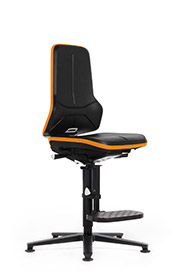 |
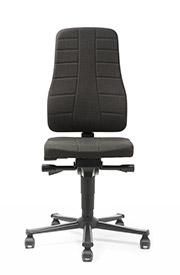 |
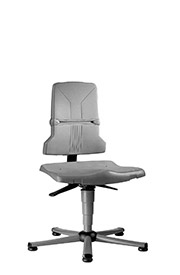 |
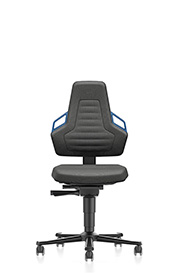 |
Excursus on "Workshop chair seat height": A brief explanation of correct seat adjustment
Only when the seat adjustment options available to the user are actually used do the positive impacts of ergonomic workshop chairs take effect. Accordingly, employees should familiarise themselves with just how easy and effective it is to ensure that their chair is correctly adjusted. Ideally, the work surface should be able to be adjusted as well as the workshop chair. If this is not the case, employees should instead focus on correctly adjusting their workshop chair and compensating with suitable aids where necessary. The following aspects should be borne in mind:- The seat height of the workshop chair should be adjusted so that the feet are positioned flat on the floor and the thighs are parallel to the floor whilst resting on the seat.
- If an adjustable backrest is available, this should be adjusted so that there is support all the way from the shoulders to the pelvis (ergonomic posture). It should be positioned neither too far forward nor too far back.
- To adjust the armrests of a workshop chair, allow the arms to hang loosely and then bend them so that the upper arm and forearm are at a 90° angle to one another. The armrests should then be adjusted to the position of the elbows.
- Ideally, the armrests and forearms should be at the same height as the work surface. If necessary, footrests can help should the work surface be too high. Ideally, the armrests and forearms should be at the same height as the work surface. If necessary, footrests can help should the work surface be too high.
- Lastly, it is important to ensure that the worker is within easy reach of all the materials they require, that they have a direct line of sight to any tools they may use and that they do not perform any work too close to their body.
By implementing these small yet practical changes, you will already have done a great deal to ensure an optimum ergonomic sitting position. Companies can promote this further through measures such as providing suitable working aids.
Excursus II: Additional health tips for workshop environments
A workplace and industrial chair with ergonomic adjustment options alone will make a significant contribution to employee well-being and quality of work. Should you wish to make further improvements, these additional tips will allow you to place considerably greater emphasis on health and well-being in the workshop:
- Ensure that lighting is sufficiently bright and fit for purpose, ideally through the use of bright ceiling lights combined with work lights that can be switched on and off as required.
- Ensure that adequate ventilation is provided in both summer and winter.
- Various different work activities result in fine particles being released into the surrounding air, which should then be removed as frequently as possible by means of suitable extraction systems or regular cleaning. This prevents the onset of respiratory problems and eye conditions.
- Be sure to regularly emphasise the importance of safety in the workplace: The appropriate use of tools, the correct method for lifting heavy objects and the necessity of wearing suitable protective clothing should be mentioned repeatedly and at regular intervals. Even small acts of negligence can have fatal consequences.

4

0
back to overview
 print
print
